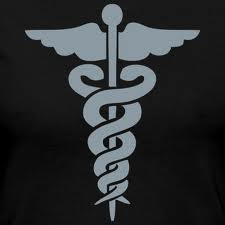Medical SMS texts can serve a variety of functions for health care providers, both providing them with timely information and passing information between providers and patients. To understand more about the possibilities of medical SMS texts, read on.
What Are SMS Texts?
Short Message Service texts (often referred to by the acronym SMS) have become one of the most frequent ways people communicate. SMS text can be sent to cell phones from other cell phones, from computers, and from handheld devices. In the United States, messages are restricted to 160 characters, and allowed characters include the alphabet, numbers, and other Latin alphabet symbols. The message consists of content, a header, the message length, the phone number of the destination, and the time of sending. Multiple messages can be used to send longer content by employing a User Data Header (UDH), which connects a multi-part message, but cuts down on the characters that can be used in each part, as it, itself, takes up message space.
Your Medical Practice
Medical practices commonly have a need to have discreet, timely, and efficient interactions with many people. Medical SMS texts have the potential to be more discreet, timely, and efficient than phone calls or emails, and certainly more than snail mail. Beyond this, neither person is required to be at a computer for such a message to be sent or received, and if the message isn’t directly received and dealt with immediately, there is less chance of another person having access to it, considering how close at hand most people keep their cell phones. These characteristics of healthcare practice make it at least possible that using SMS texts for sending and receiving some of the practice’s messages—that is, using it as an adjunct to other forms of communication—might be useful.
Because there are laws about spam, and because patients have to pay to receive SMS texts, it is important to secure permission to use texting prior or initiating a program. It’s also important to consider whether texting is part of the lifestyle of your patients to know whether it would be a valuable addition to your particular practice. If your patients are older or unable to afford cell phones, instituting a medical SMS text program would not be a significant asset.
Potential uses of Medical SMS Texts
There are services available to help healthcare practices set up medical SMS texting, and they can help with setting up medical SMS texts for a variety of potentially useful purposes:
—From the Office to the Patient There are several types of information that a healthcare provider may wish to send to patients.
• Appointment Reminders Research has found that text messages to patients significantly reduces missed appointments. This can be particularly true for appointments that are made a long time in advance, or for patients who may have memory issues.
• Visit Follow-ups SMS text messages can provide a means to quickly check in with a patient after a visit, find out if treatment is working, and making sure that further care is not required or establishing that it is, in fact, necessary.
• Compliance For a patient on a complicated regiment of medication or a patient for whom compliance is an issue for any reason, SMS texts may assist in treatment adherence. SIMpill in London has created a pill bottle containing a SIM card to this end. It the bottle is opened at the expected time, a message is sent verifying the dose. If no message is received, the patient is contacted with a reminder message.
• Test Results A test-result delivery system called ResultsSMS works in 6 stages. 1) A medical test is performed. 2) The patient provides permission and a cell phone number for results, and in return receives a password. 3) An SMS informs the patient that test results are available and requests the password. 4) The patient sends a message with the password. 5) The test results are sent via SMS. 6) Optionally, further information based on the test results can follow.
• Health Alerts These are specialized alerts designed for target groups. It might be a reminder to susceptible patients to receive a flu shot, information about air quality or allergens for those who are likely to be affected, or information for pregnant women, or families with newborns, for example.
—From the Patient to the Office Similarly, there are several types of message that a patient might wish to send to a provider’s office.
• Patient Questions Particularly for a patient who is at work with a pressing question, initiating the conversation with a text message may prove to save time and maintain privacy.
• Prescription Renewals The prescription renewal process might be streamlined if patients sent an SMS text with a keyword so that all such messages could be gathered and dealt with at once, rather than using up an employee’s time on the phone.
—From One Medical Expert to Another Communication between healthcare providers and other providers or with support industries might also benefit from SMS texts.
• Medical News Access for Health Care Providers At least one service provides medical headlines via mobile phone.
Sources
The Federal Trade Commission’s CAN-SPAM Act website for businesses: http://www.ftc.gov/bcp/edu/pubs/business/ecommerce/bus61.shtm
http://www.medicalnewstoday.com/articles/134274.php
http://resultssms.org/
http://www.thetextworks.com/case-study/medical-services
http://www.doctorslounge.com/sms.htm
